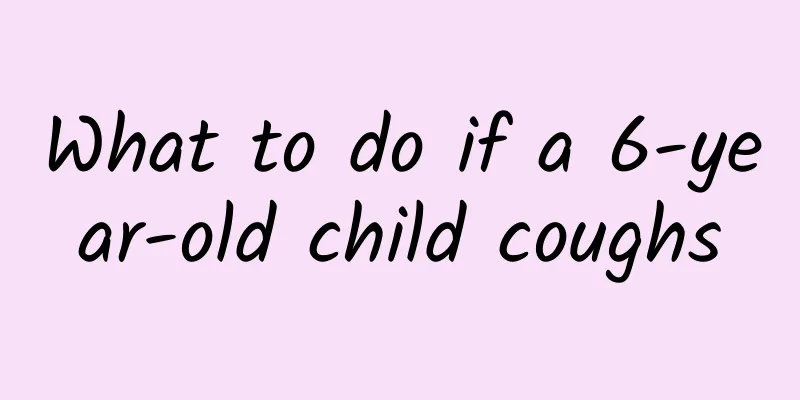What causes thick gray tongue coating? What does it represent?

|
Yellow moss comes in different colors, such as light yellow, tender yellow, dark yellow, and burnt yellow. Generally speaking, the darker the color of the yellow tongue coating, the more severe the heat evil is. Light yellow indicates mild fever; tender yellow indicates heavier fever; dark yellow indicates even heavier fever; burnt yellow indicates heat accumulation; yellow and dry indicates heat damaging body fluids; yellow and greasy indicates damp heat. So what is the cause of thick gray tongue coating? (1) Moss color: There are white moss, yellow moss, gray moss, black moss, etc. ① White tongue coating White tongue coating is the most common in clinical practice. Tongue coating of other colors can be considered as transformation from white tongue coating. White tongue coating generally belongs to the lungs, and is mainly related to superficial symptoms and cold syndromes. However, clinically, white tongue coating can also be seen in cases of internal symptoms and heat syndromes. If the tongue coating is thin, white and moist, it indicates wind-cold; if it is thin, white and dry, it indicates wind-heat; if it is internal cold and dampness, the tongue coating can be seen as white, thick and greasy. ② Yellow moss comes in different colors such as light yellow, tender yellow, dark yellow, and burnt yellow. Generally speaking, the darker the color of the yellow tongue coating, the more severe the heat evil is. Light yellow indicates mild fever; tender yellow indicates heavier fever; dark yellow indicates even heavier fever; burnt yellow indicates heat accumulation; yellow and dry indicates heat damaging body fluids; yellow and greasy indicates damp heat. ③Gray-black tongue coating mostly indicates heat syndrome, but also cold-dampness or deficiency-cold syndrome. A gray and dry tongue coating indicates excessive heat and damage to body fluids; a gray and moist tongue coating indicates yang deficiency and excessive cold. Gray-black tongue coating is more common in the more serious stages of the disease. (2) Thickness: thin moss, thick moss, little moss, no moss. Thin tongue coating usually indicates that the disease has just started, the pathogens are on the surface, and the condition is relatively mild; thick tongue coating usually indicates that the pathogens are more severe and have spread to the interior; or there may be gastrointestinal stagnation; or there may be phlegm and dampness. The thicker the tongue coating, the more serious the disease and the more severe the condition. However, the formation of tongue coating reflects the presence or absence of stomach qi. A thick tongue coating indicates that stomach qi still exists, while a thin coating often indicates that the body's positive qi is insufficient. No coating means that the stomach qi is very weak and lacks the opportunity to grow. There is irregular peeling of the tongue coating on the surface of the tongue, and the peeling area is smooth and without coating, which is called flowery peeling coating. It is mostly caused by insufficient qi and yin of the stomach. If there is also greasy coating, it means that phlegm and dampness have not been transformed and the vital energy has been damaged. (3) Moisture and dryness: reflects the condition of body fluids. The normal tongue coating is neither dry nor wet. Dry tongue coating means that the body's body fluid has been depleted. Exogenous diseases are mostly caused by dryness and heat that damages the body fluid, while internal diseases are mostly caused by yin deficiency and lack of body fluid. A moist tongue coating indicates that the body fluid is not damaged, but if there is too much moisture on the coating and the tongue is about to drip, it is called slippery tongue coating, which indicates that there is moisture in the body. Greasy coating: The coating is dense and fine, like a layer of turbid and smooth mucus covering the surface of the tongue. It is not easy to wipe off and is mostly caused by excessive phlegm and dampness. Putrid tongue coating: The tongue coating is loose like tofu dregs, piled on the surface of the tongue and easy to wipe off. It is mostly caused by the excess heat vaporizing the food turbidity in the stomach, and is a manifestation of the decay of old food in the stomach. |
<<: What should I do if I have neurasthenia-induced chest tightness? How to regulate?
>>: What should I do if I feel chest tightness and shortness of breath in the hot summer?
Recommend
Mild pain in the testicles
The testicles are important reproductive organs f...
Is it normal to have fetal movement at 4 months?
Since there is still some space inside the uterus...
What is the anti-nausea massage method?
There are many diseases in life that can cause pa...
What medicine to take for HP infection
hp stands for Helicobacter pylori. The stomach an...
Classic Chinese medicine sachet recipe
Chinese herbal medicines have a wide range of the...
How much is a pound of Yunsanqi
What is 50-head Panax notoginseng? To put it simp...
What to do if anal fissure does not heal
Anal fissure is a very painful thing, and the wou...
Can skin cancer be cured?
After suffering from skin cancer, people feel dep...
What causes excessive sweating on the chest?
The human body sweats not only because it feels h...
Pelvic correction belt
A pelvic correction belt, which we call a pelvic ...
What are the massage methods for chronic pharyngitis?
Pharyngitis is one of the most common diseases in...
Chinese herbal formula for treating body odor
Body odor is a troublesome problem, but it depend...
What deficiency causes dwarfism?
In fact, dwarfism is mostly not caused by a lack ...
Can I smoke after having my teeth pulled? Pay attention to these things
Oral problems are very diverse. Many people like ...
Why does the cervical vertebra turn black and purple after cupping?
For patients with cervical spondylosis, cupping i...









